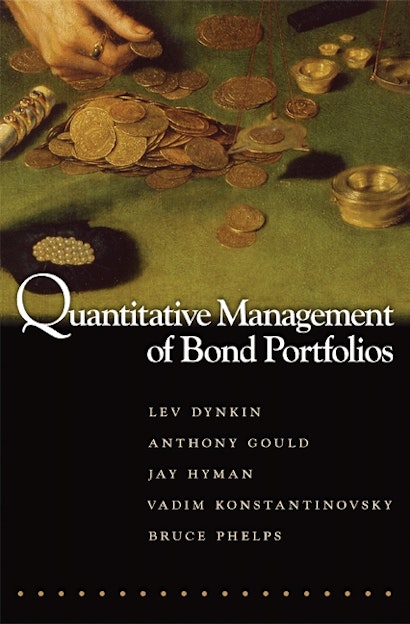The practice of institutional bond portfolio management has changed markedly since the late 1980s in response to new financial instruments, investment methodologies, and improved analytics. Investors are looking for a more disciplined, quantitative approach to asset management. Here, five top authorities from a leading Wall Street firm provide practical solutions and feasible methodologies based on investor inquiries. While taking a quantitative approach, they avoid complex mathematical derivations, making the book accessible to a wide audience, including portfolio managers, plan sponsors, research analysts, risk managers, academics, students, and anyone interested in bond portfolio management.
The book covers a range of subjects of concern to fixed-income portfolio managers—investment style, benchmark replication and customization, managing credit and mortgage portfolios, managing central bank reserves, risk optimization, and performance attribution. The first part contains empirical studies of security selection versus asset allocation, index replication with derivatives and bonds, optimal portfolio diversification, and long-horizon performance of assets. The second part covers portfolio management tools for risk budgeting, bottom-up risk modeling, performance attribution, innovative measures of risk sensitivities, and hedging risk exposures.
A first-of-its-kind publication from a team of practitioners at the front lines of financial thinking, this book presents a winning combination of mathematical models, intuitive examples, and clear language.
The authors are with the Lehman Brothers Quantitative Portfolio Strategies Group. Lev Dynkin is a Managing Director and the Group's founder and Global Head. Anthony Gould, Jay Hyman, and Vadim Konstantinovsky are Senior Vice Presidents. Bruce Phelps is a Managing Director.
"This Wall Street research team has become the recognized authority in quantitative approaches to managing bond portfolios, having worked with investors over many years and in many market environments. Their book is well organized, informative, and readable. I highly recommend it to anyone interested in investment management, regardless of their quantitative background."—Keith Anderson, Chief Investment Officer for Fixed Income, BlackRock
"I've always been a huge fan of the authors' work. This is their best yet and a 'must read' for anyone interested in bond portfolio management. The authors go beyond the numbers, delving into the issues of portfolio design crucial to the practitioner."—Kenneth S. Leech, Chief Investment Officer, Western Asset Management Company
"This team combines intuition with strong empirical research. The greatest achievement of this book is the recognition that very often a portfolio's structure matters as much as its strategies. If you are looking for ways to outperform your benchmarks and competitors, this is a great starting point."—Emanuele Ravano, Co-Head of Portfolio Management, PIMCO Europe
"This is the most comprehensive treatment of the analysis of fixed-income strategies for professional asset managers. The coverage is broad and authoritative, with a clear focus on risk and performance relative to benchmarks, across a range of markets. Anyone managing bond portfolios should have a copy."—J. Darrell Duffie, Stanford University
"Written by the leading minds in quantitative fixed-income portfolio management, this book offers an excellent, accessible guide to sources of superior returns and methods for analyzing portfolio risk and performance."—William N. Goetzmann, Yale University
"No single currently available book serves the needs of a person who seeks a fuller understanding of the quantitative management of bond portfolios. This book is exactly what I have been looking for. Not only is there a need for it among students, educators, and professionals, but it also has the potential to influence academic thought by exposing academics to some of the best practices on the street."—Ravi Jagannathan, Kellogg School of Management, Northwestern University
"This is a very useful addition to the bond literature, produced by the premier bond group on Wall Street. The chapters cover a wide range of issues that will be of interest to academics who teach and research securities markets, and they are well written. Bond traders, fund managers, and other investment banking professionals will want this book."—Simon Benninga, Tel Aviv University and the Wharton School, author of Financial Modeling and Principles of Finance with Excel

